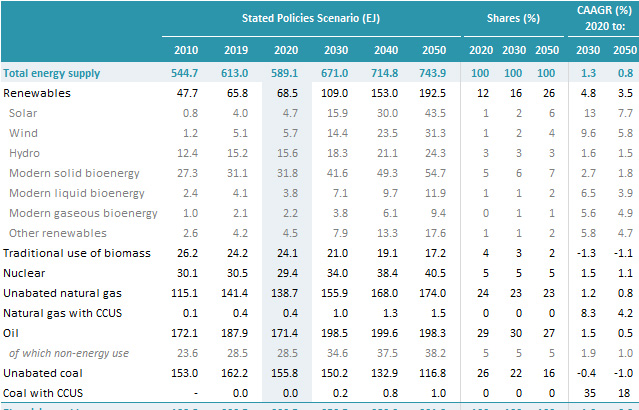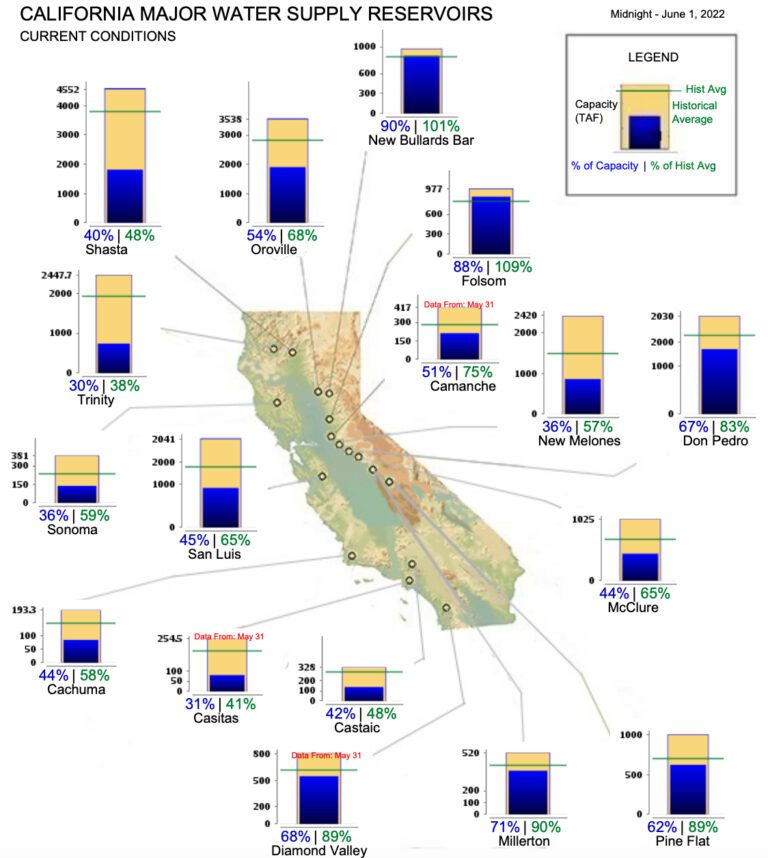Environment & Energy
Related: About this forumCalifornia Drought May Severely Impact Power Output This Summer.
It is rare, in most accountings, that hydroelectric power is not separated as a separate category from other forms so called "renewable energy" although it is generally superior to solar and wind inasmuch as it is generally reliable energy...until now.
Hydro is far more productive than solar and wind combined; it produces slightly more than half the energy per year as nuclear energy provides, whereas solar and wind combined produce about a third as much energy as nuclear provides:

Source: IEA World Energy Outlook, 2021, page 294, Table A1A
The failure to address climate change despite all those cool pictures of landscapes rendered into industrial parks for wind turbines, thousands of acres of land laced with solar cells, blah, blah, blah we've been looking at for this entire century has impacted water flows, as is now increasingly understood.
Power is an industry trade journal to which anyone can subscribe, as I do. An article on the availability of power at the every same time we expect extreme temperatures:
California Drought Could Severely Limit Hydropower This Summer
An excerpt:
The EIA suggests in a supplement to its May 2022–released Short-Term Energy Outlook that current drought conditions in the state potentially “have a significant impact” on power markets throughout the West from June through September 2022. That impact “could be different than in past years, given the state’s accelerating growth in intermittent generating capacity and reliance on imports,” which accounted for nearly one-third of California’s power supply in 2020, it said.
Conditions this summer are especially precarious given that California has experienced more frequent and intense drought conditions over the past decade—and it is currently grappling with a third continuous year of drought.
“During the 2022 water year, which began October 1, 2021, snowpack reached above-normal levels in December, but dry conditions then persisted through March. As of April 1, which typically marks the peak of snowpack, California’s snowpack had an equivalent water content of 6.9 inches, which is about 40% below the median value from 1991 through 2020,” the EIA explained. “Less snowpack means that, as temperatures warm in the spring, less snow will melt and flow into California’s reservoirs.”
Drought Widely Affecting Major Reservoirs
According to the California Department of Water Resources, every reservoir in California is suffering below-average conditions. These include reservoirs where some of the state’s largest hydropower generators are located, such as the 644-MW Edward C. Hyatt plant at Lake Oroville; the 300-MW New Melones plant at New Melones Lake; the 714-MW Shasta plant at Shasta Lake; the 140-MW Trinity pant at Trinity Lake; the 207-MW Folsom plant at Folsom Lake; and the 315-MW Colgate plant at New Bullards Bar Reservoir. The six plants, notably, are the focus of the EIA’s modeling in the May-released supplement. The six projects accounted for 22% of California’s total hydropower generation over the previous five years, the EIA notes...

The caption:
Prices are expected to rise for power in the State; how high they rise is a function of whether the wind blows.
Today in Indio, CA, the day time high was 40.6°C (105°F). On Thursday the temperature will be 43.9°C (111°F). In the absence of air conditioning, which can take place in the absence of electricity, these kinds of temperatures can easily prove fatal.
The population of Indio is about 90,000 people.
Don't worry, be happy. We can always manufacture a few billion batteries that charge in 10 minutes and be saved.
History will not forgive us, nor should it.
hunter
(38,311 posts)... as wind and solar power fluctuate.
Water is pumped uphill when electricity is cheap, and flows downhill generating electricity when electricity is expensive.
If there's less water being moved around the state then this capacity of the state water systems to stabilize the grid is diminished.